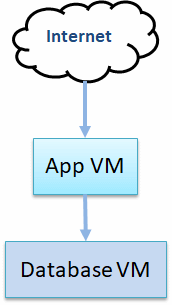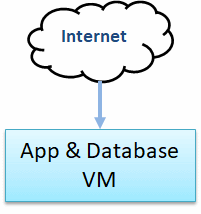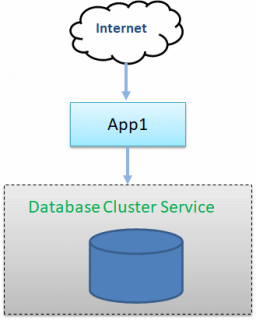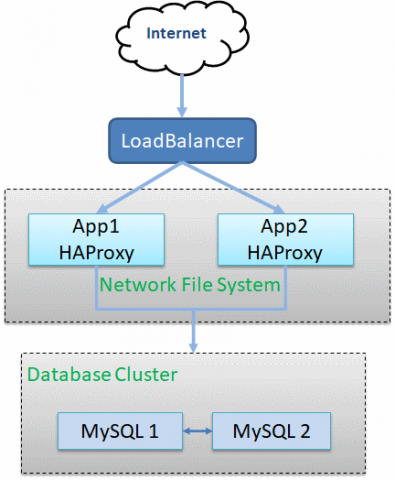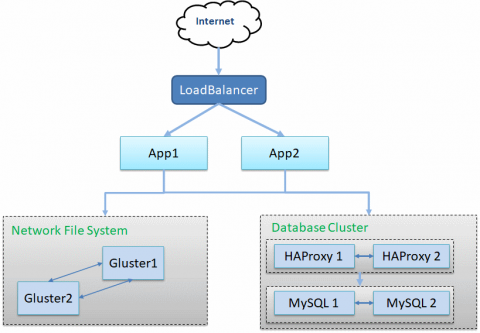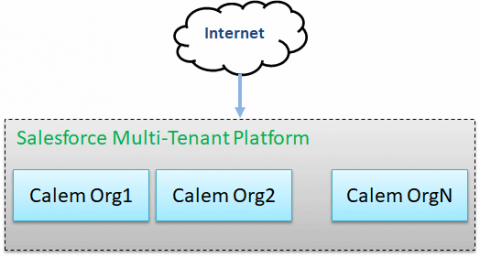Calem Blogs
How to Deploy Calem with High Availability & Performance
Calem is a full-featured Enterprise Asset Management (EAM)/Computerized Maintenance Management System (CMMS) application suite. Customers can choose to deploy Calem in ways that best match their business needs.
- Calem Cloud Service - Calem is deployed in a cloud service provider and managed by CalemEAM.
- On-Premise Deployment - Calem is deployed in customers' on-premise infrastructure.
- The Salesforce platform™ - Calem is installed from Salesforce's AppExchange in an existing org, or a new org.
1. Calem Cloud Service
Calem cloud service is a managed service provided by CalemEAM. It offers customers great performance and policy compliance with top cloud service providers. For instance, customers in the US can have their service provisioned in a US cloud provider such as Linode (high performance and availability), EU customers may choose to have Calem deployed in a EU data center with GDPR compliance, Chinese customers can have great performance with a cloud provider with data centers located in China.
1.1 VM-Based Architecture
Calem offers a simplified architecture for high availability based on fast Linux VM image backup and recovery. This option is simple to manage and can achieve high performnance and availability results through VM monitoing and backups.
- One (1) App VM for Calem App server. The App VM image is backed up regularly.
- One (1) database VM for Calem Database Server. The database VM image is backed up regularly.
- Both App VM and database VM can be restored within minutes to new VM instances in case of failure.
1.2 VM Based – One VM
For organizations with small number of assets to manage, a single VM architecture may be sufficient.
- The VM includes both application and database
- Application availability is achieved through regular VM backups and restoration upon failure.
1.3. High Availability Architecture
Calem offers a highly available architecture (HA) with redundancy and failover through cloud infrastructure services including:
- Database cluster service such as RDS service in Amazon
- Network file service (NFS) such as Amazon Elastic File System (Amazon EFS). Calem application files including customization, sessions and cache, along with uploaded docs need to be in the NFS and shared by Calem application servers.
- Load balancer service
- Multi-zone failover is available depending on the cloud service providers.
1.4 High Availability – One Application VM
One variation is to have a single application VM with a database cluster service.
- This option simplifies application server configuration
- Application availability is achieved through regular VM backup, and restore upon failure.
2. On-Premise Deployment
On-premise deployment is available for clients who need to host Calem in their own infrastructure.
2.1 VM-Based ArchitectureCalem offers a simplified architecture for high availability based on fast Linux VM image backup and recovery. This option is simple to manage and can achieve good results through VM monitoing and backups.
- One (1) App VM for Calem App server. The App VM image is backed regularly.
- One (1) database VM for Calem Database Server. The database VM image is backed up regularly.
- Both App VM and database VM can be restored within minutes to new VM instances in case of failure.
2.2 High Availability Architecture – 4+ Nodes
This architecture consolidates network file system and application VMs together. It offers high availability with four VMs.
- Two (2) server VMs hosting Calem application, Gluster (https://www.gluster.org) storage volume shared by the application VMs, and HaProxy connecting to MySQL cluster. Calem application files including customization, sessions and cache, along with uploaded docs need to be in the shared storage volume and shared by Calem application servers.
- The two application VMs may be configured in a master/slave mode. The loadbalancer directs requests to one application VM (the master VM). If the master VM fails, the loadbalancer fails over to the other application VM (the slave VM).
- An HAProxy is installed in each application VM distributing load to MySQL cluster.
- Two (2) server VMs forming MariaDB/MySQL master-master cluster.
2.3 High Availability Architecture – 8+ Nodes
This architecture demonstrates the horizontal scalability of Calem. It may be simplified by the integrator or system administrator based on business requirements.
- One (1) network file system (NFS) volume based on multiple Linux VMs using Gluster (https://www.gluster.org/).
- Multiple app servers with shared Gluster storage volume above. One may add/remove web servers as needed. A load balancer is used to distribute user requests among Calem app servers.
- Multiple database nodes provide redundancy and fail-over. The database nodes form a master-master cluster.
- A HAProxy cluster distributes requests to database cluster.
3. Calem on the Salesforce platform™
Calem Enterprise Lightning on the Salesforce platform™ is a native application in the Salesforce platform™ - the #1 CRM platform It is listed in the AppExchange (https://appexchange.salesforce.com/).
Calem Enterprise Lightning enables customers to implement a native EAM/CMMS solution in the Salesforce platform™.
The high availability is provided by the Salesforce platform™.
- Always-On Availability — Allowing customers to access Calem services at any time.
- Performance at Scale — The Salesforce platform™ has the capacity to scale to the largest of teams. The architecture was designed to handle millions of users. Calem services scale as rapidly as our customers require (including load balancers, application cluster, database cluster, and email services).
- Multitenant Infrastructure — The Salesforce platform™ delivers efficiently shared infrastructure resources to each Calem org. Each Calem Org (a tenant) offers the immense resources built into the Salesforce platform.
By accepting you will be accessing a service provided by a third-party external to https://eam.calemeam.com/
